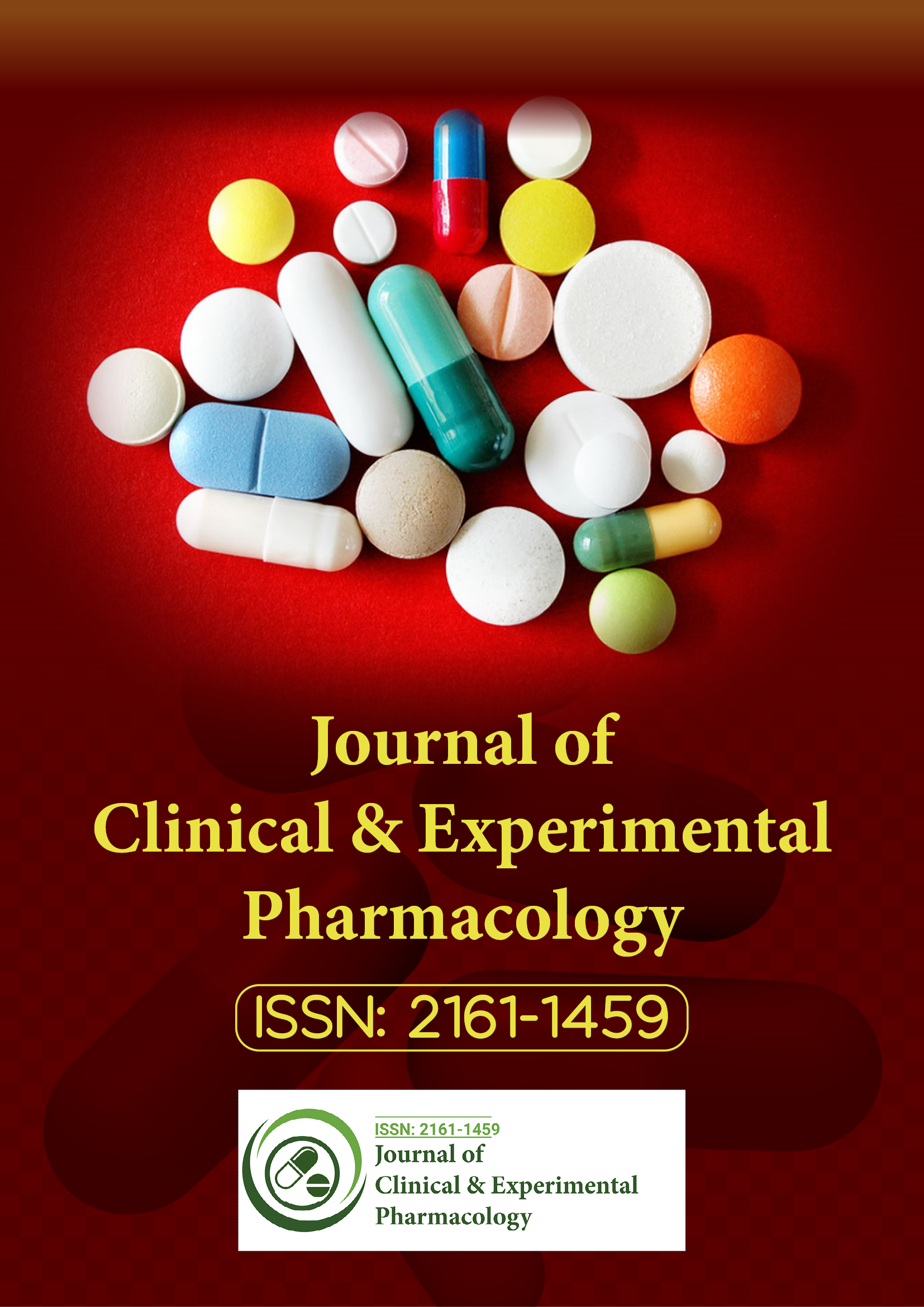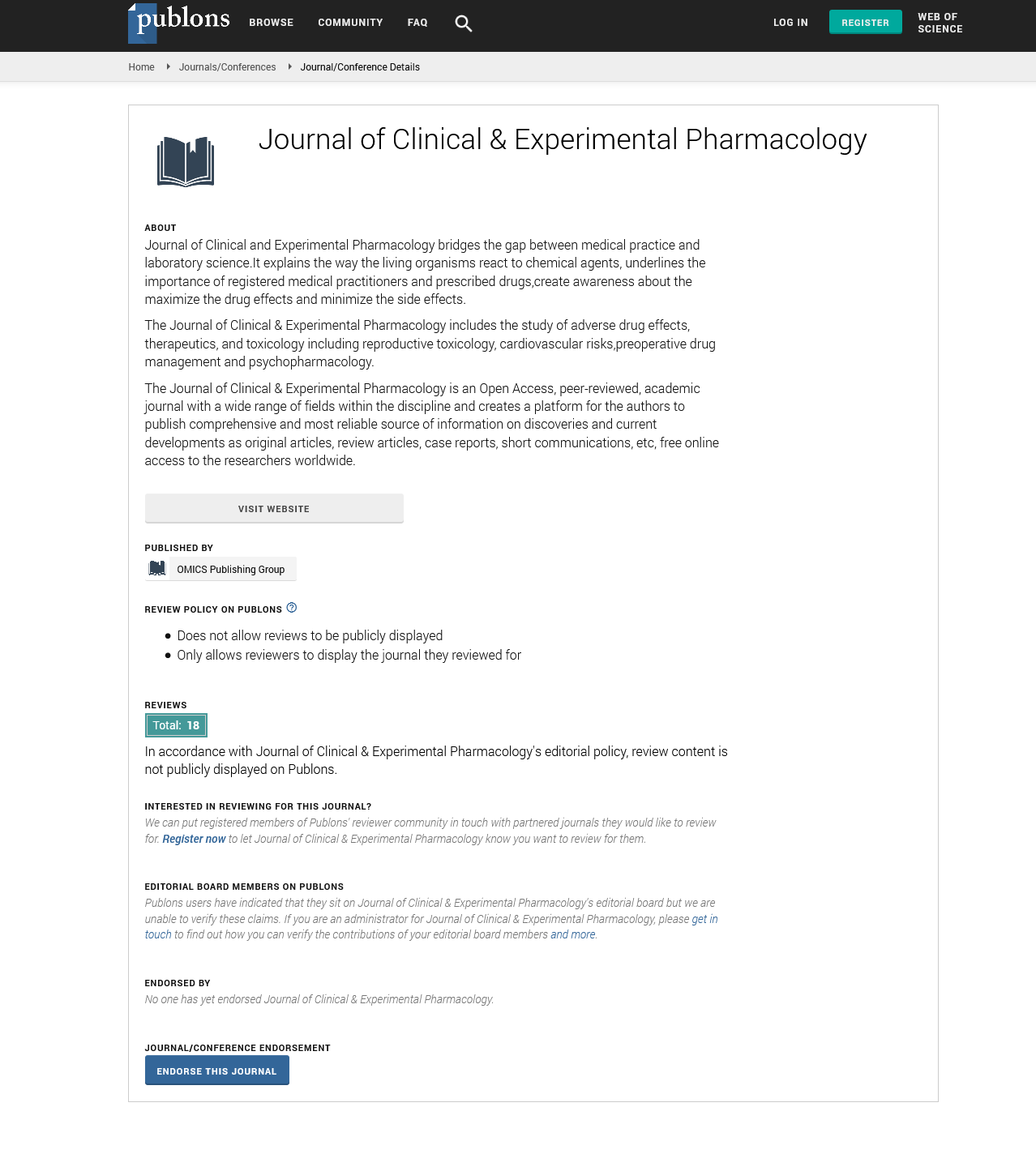Indexed In
- Open J Gate
- Genamics JournalSeek
- China National Knowledge Infrastructure (CNKI)
- Ulrich's Periodicals Directory
- RefSeek
- Hamdard University
- EBSCO A-Z
- OCLC- WorldCat
- Publons
- Google Scholar
Useful Links
Share This Page
Journal Flyer

Open Access Journals
- Agri and Aquaculture
- Biochemistry
- Bioinformatics & Systems Biology
- Business & Management
- Chemistry
- Clinical Sciences
- Engineering
- Food & Nutrition
- General Science
- Genetics & Molecular Biology
- Immunology & Microbiology
- Medical Sciences
- Neuroscience & Psychology
- Nursing & Health Care
- Pharmaceutical Sciences
Opinion Article - (2025) Volume 15, Issue 4
Pharmacodynamics: Exploring Drug Actions and Biological Responses
Sarah Jones*Received: 01-Aug-2025, Manuscript No. CPECR-25-29887; Editor assigned: 04-Aug-2025, Pre QC No. CPECR-25-29887 (PQ); Reviewed: 19-Aug-2025, QC No. CPECR-25-29887; Revised: 27-Aug-2025, Manuscript No. CPECR-25-29887 (R); Published: 05-Sep-2025, DOI: 10.35248/2161-1459.25.15.498
Description
Pharmacodynamics is the study of how drugs exert their effects on biological systems and the mechanisms underlying those effects. It focuses on the interaction between drugs and their molecular targets, the resulting biochemical and physiological changes and the relationship between drug concentration and therapeutic or toxic outcomes. By understanding these processes, pharmacodynamics provides the foundation for rational drug development, clinical application and optimization of therapeutic regimens.
At the core of pharmacodynamics is the concept of drug receptor interaction. Most drugs exert their effects by binding to specific proteins such as receptors, enzymes, ion channels, or transporters. This binding can activate or inhibit biological pathways, leading to changes in cellular and tissue function. The strength of this interaction is quantified by parameters such as affinity (the tendency of a drug to bind to its target) and efficacy (the ability of a drug receptor complex to produce a response). Agonists, antagonists, partial agonists and inverse agonists represent different classes of drugs based on their actions at receptor sites.
The relationship between drug dose and response is another central element. Dose-response curves illustrate how increasing concentrations of a drug influence the magnitude of effect. Key parameters include the Effective Dose (ED50), which produces half of the maximal effect and the Lethal Dose (LD50), which causes death in 50% of subjects. The therapeutic index, defined as the ratio between toxic and effective doses, provides insight into drug safety. Drugs with a narrow therapeutic index require careful monitoring to avoid adverse outcomes.
Signal transduction pathways form an important component of pharmacodynamics. When a drug binds to a receptor, it can initiate cascades of intracellular events involving second messengers such as cyclic AMP, calcium ions, or inositol triphosphate. These cascades amplify the initial signal and influence a wide range of cellular processes, from gene expression to neurotransmission. Understanding these pathways helps in designing drugs that target specific steps in disease mechanisms, enhancing therapeutic precision.
Pharmacodynamics also addresses variability in drug response. Factors such as age, sex, genetic background, disease state and concomitant medication use influence how individuals respond to therapy. For example, genetic polymorphisms in receptor structure or downstream signaling proteins can alter sensitivity to drugs. Personalized medicine integrates pharmacodynamic principles with pharmacogenomic data to tailor treatment strategies for individual patients.
Tolerance and resistance are further considerations. Repeated exposure to certain drugs may reduce their effectiveness, a phenomenon known as tolerance. This may result from receptor downregulation, desensitization of signaling pathways, or compensatory physiological changes. Resistance, particularly in antimicrobial and anticancer therapy, arises when target cells adapt or mutate, diminishing drug efficacy. Pharmacodynamics provides insights into these challenges and guides strategies to overcome them.
The integration of pharmacokinetics and pharmacodynamics is critical for understanding overall drug action. While pharmacokinetics describes how the body affects the drug (absorption, distribution, metabolism, excretion), pharmacodynamics explains how the drug affects the body. Mathematical models combining both domains, known as PK/PD models, are widely used to predict drug behavior, optimize dosing regimens and design clinical trials. These models are especially valuable in fields like oncology, infectious disease and anesthesiology, where precise dosing is essential.
Pharmacodynamics has practical applications across multiple therapeutic areas. In cardiovascular pharmacology, drugs such as beta-blockers and calcium channel blockers modulate receptor-mediated processes to control blood pressure and heart rate. In psychiatry, antipsychotics and antidepressants alter neurotransmitter signaling to relieve symptoms. In oncology, targeted therapies inhibit specific molecular pathways driving cancer progression. Each of these examples illustrates how pharmacodynamic principles guide clinical use and improve patient outcomes.
Recent advances in pharmacodynamics include systems pharmacology and computational modeling. These approaches integrate data from genomics, proteomics and metabolomics to create holistic models of drug action at the cellular and organism levels. Such models help in predicting complex drug interactions, identifying new therapeutic targets and understanding off-target effects. Additionally, imaging technologies, such as Positron Emission Tomography (PET), allow visualization of drug receptor interactions in living subjects, offering real-time insights into pharmacodynamic processes.
Conclusion
Pharmacodynamics provides a detailed understanding of how drugs interact with biological systems to produce therapeutic or adverse effects. By elucidating receptor interactions, dose response relationships and signaling pathways, it serves as a framework for drug design, clinical practice and personalized medicine. Integration with pharmacokinetics and the application of advanced modeling techniques further expand its relevance. As research advances and therapeutic options diversify, pharmacodynamics will remain a cornerstone of pharmacological science, shaping the safe and effective use of medicines in healthcare.
Citation: Jones S (2025). Pharmacodynamics: Exploring Drug Actions and Biological Responses. J Clin Exp Pharmacol. 15:498.
Copyright: © 2025 Jones S. This is an open-access article distributed under the terms of the Creative Commons Attribution License, which permits unrestricted use, distribution and reproduction in any medium, provided the original author and source are credited.

